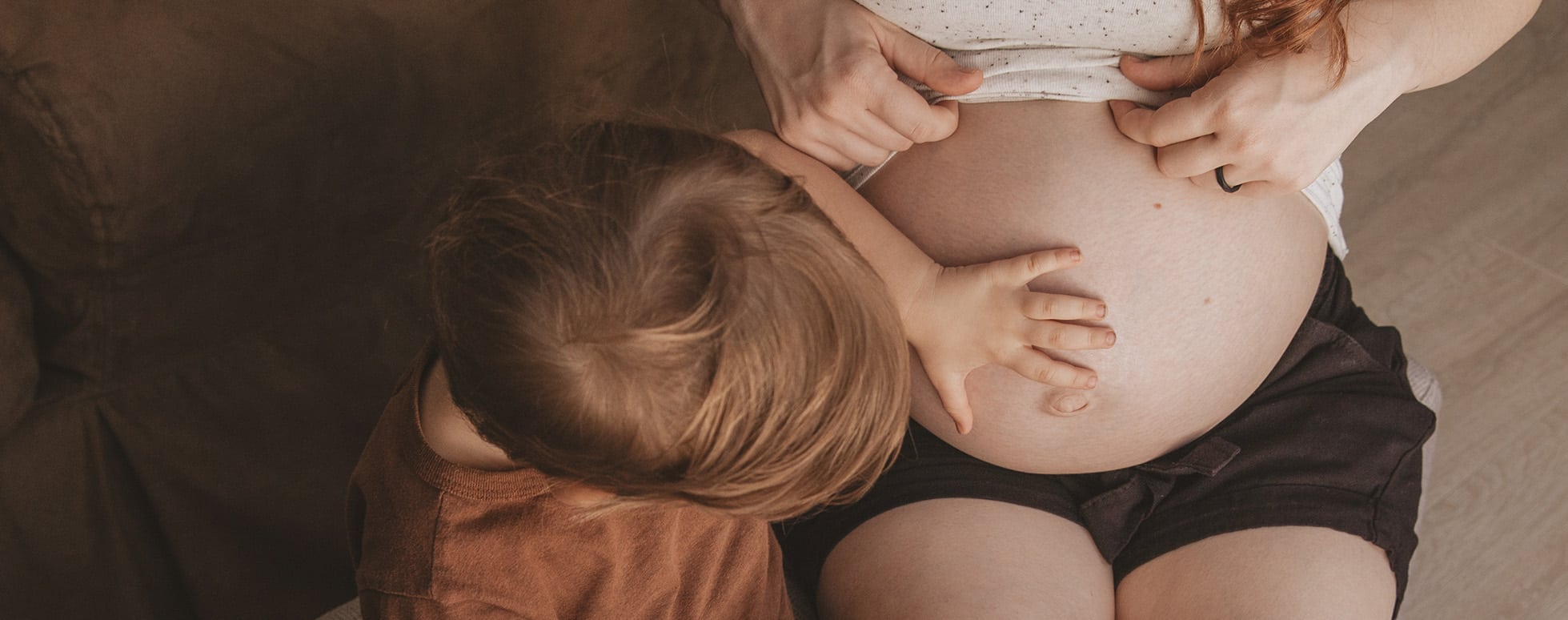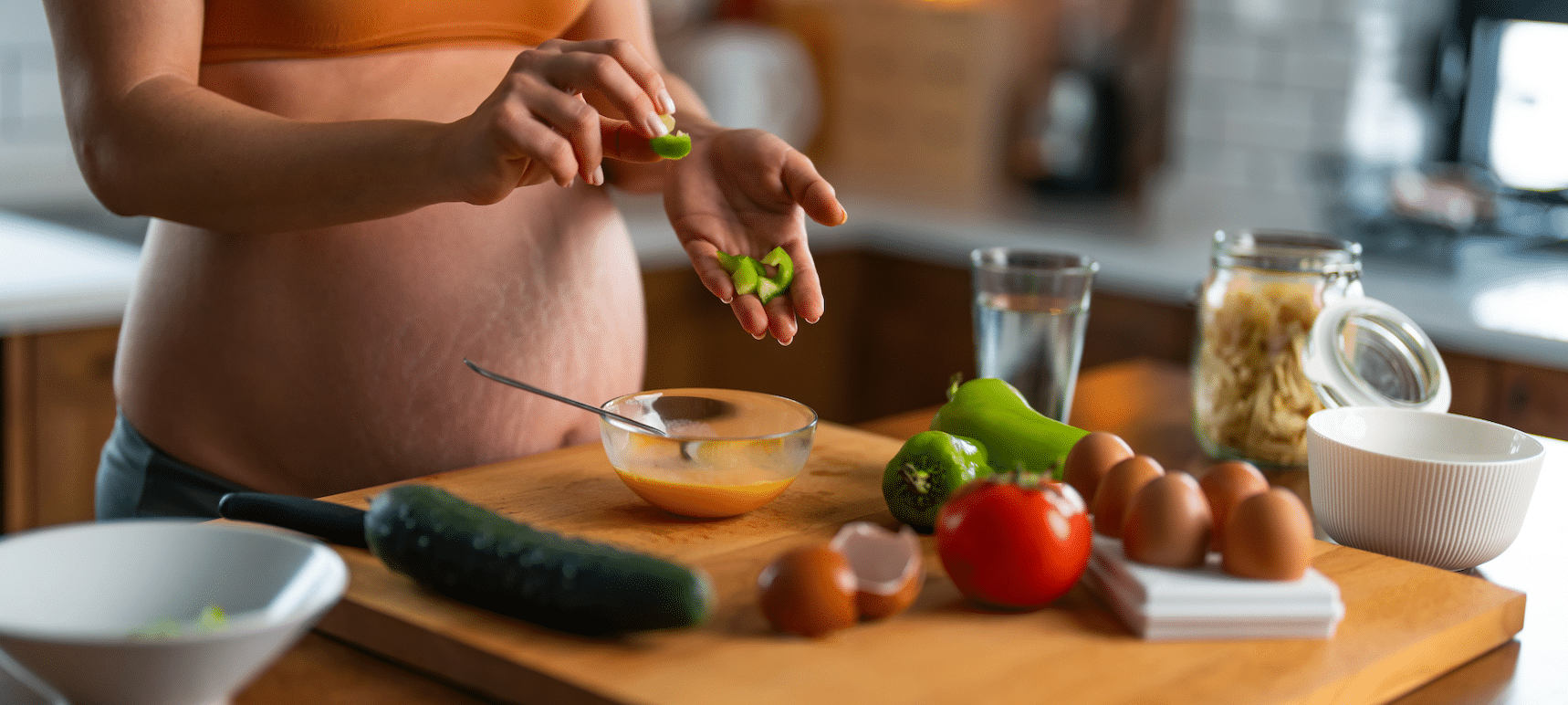
Preeclampsia: Signs, Symptoms, Treatments, & How to Reduce Your Risk
You may have heard the word preeclampsia before, but unless you or someone you know has had it, you may not really understand what it means. We’re here to provide knowledge and resources so you feel prepared during your pregnancy to recognize the symptoms of preeclampsia and understand next steps should you have preeclampsia. Knowledge is power and being prepared can help reduce any anxieties you may feel about preeclampsia.
What is preeclampsia?
Preeclampsia is a pregnancy complication that affects 1 out of 25 women during their pregnancy (usually in the second half) or soon after delivering their baby. Although most people think of high blood pressure when they hear the word preeclampsia, preeclampsia can also negatively impact the kidneys and other organs, like the liver.
What causes preeclampsia?
Researchers are still trying to fully understand what causes preeclampsia. At least some preeclampsia is caused by reduced blood supply to the placenta. Blood vessels that develop during pregnancy to support the fetus, and, in women with preeclampsia, these blood vessels may not work as they should. For example, sometimes the blood vessel walls may have problems or the vessels may spasm (or contract).
How will my OB/GYN and/or Certified Nurse Midwife (CNM) monitor for preeclampsia?
At most of your pregnancy visits, your Diana Health Care Team will check your blood pressure and possibly ask for a urine sample. If your blood pressure is high or your urine shows signs of possible preeclampsia (with protein in your urine), you will be evaluated further. We may also ask about other symptoms sometimes associated with preeclampsia or related conditions, such as: excess swelling, severe headache, nausea or vomiting, abdominal pain, and/or vision changes.
What increases the risk of preeclampsia?
Women who had preeclampsia during a previous pregnancy are at an increased risk for having it again. There are also additional risk factors, including:
- Pregnancy with multiples (eg. twins or triplets)
- Chronic high blood pressure
- In vitro fertilization
- History of diabetes or kidney disease
- Aged 35 or older
- A family history of preeclampsia
- Obesity
What is the difference between preeclampsia and eclampsia?
Fortunately eclampsia is rare. Eclampsia is when a mother has a seizure or coma, with other signs or symptoms of preeclampsia. Moms with preeclampsia are sometimes put on medications that decrease the risk of having a seizure, though the medication may make them feel tired and groggy while on it in the hospital.
What may happen to my baby and I if I have preeclampsia?
Some moms with preeclampsia may have many symptoms while others may have no noticeable symptoms. This is one of the reasons why routine prenatal office visits are so important, so that your Care Team can potentially detect preeclampsia, even if you’re not experiencing symptoms. Some babies of moms with preeclampsia may not receive adequate blood and oxygen, which may lead to growth restriction or preterm birth. In addition to high blood pressure and protein in their urine, moms may develop other symptoms like a headache, nausea, vomiting, and problems with their kidneys and liver. Other more serious conditions and complications can develop too which is why it’s so important to be screened for preeclampsia and then closely monitored if you do have preeclampsia. With regular screening and monitoring, your risk of developing major complications from preeclampsia is greatly reduced.
How is preeclampsia treated?
If you have preeclampsia, your provider will work with you to determine what treatment is needed. The appropriate treatment varies based upon how far along you are in your pregnancy, how your baby is doing, how severe your blood pressure is, how your kidneys and liver are doing, as well as other factors that are closely monitored. Sometimes moms are admitted to the hospital and given medication to lower blood pressure and to decrease the risk of having a seizure. At other times, if you and your baby are stable and it is appropriate, your provider may follow you outside of the hospital. It is very important to work closely with your provider during this time due to potential risks.
I’m not pregnant yet and want to decrease my risk of getting preeclampsia when I am pregnant. What can I do?
It’s important to try to be as healthy as possible prior to getting pregnant. For example, most women in the U.S. do not get adequate dietary fiber. It’s important to get adequate fiber (fiber is only found in plants- fruits, vegetables, whole grains, beans, seeds, nuts) as it may decrease your risk for preeclampsia, though more research is needed. For this reason, make sure that you’ve had a preconception counseling visit with your Diana Health Care Team or other healthcare provider if you aren’t using Diana Health. We’ll help review ways that you can be as healthy as possible as you prepare for your pregnancy, which will help reduce your risk.
Your Diana Health team is specially trained to support you prior to pregnancy, during your pregnancy, and after delivery of your baby. You can always book a visit with us online or call us at any of our locations. We care about you and your family and are here to support you!
Share This Post
























